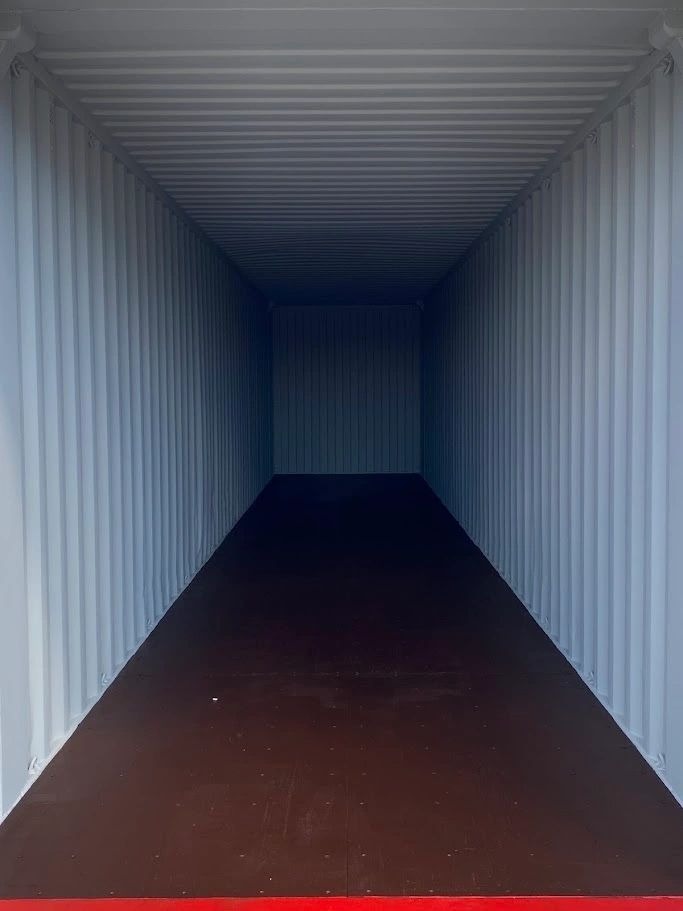The Little-Known Benefits To Intermodal Containers

Intermodal Containers: The Backbone of Global Trade
Intermodal containers, often described simply as shipping containers, are an important element of contemporary logistics and global trade. Presented in the mid-20th century, these standardized boxes enable the seamless transport of items via several modes of transport, including ships, trains, trucks, and more. Their influence on the supply chain has actually been profound, assisting in increased effectiveness and reducing shipping costs.
What are Intermodal Containers?
Intermodal containers are big standardized boxes developed for the efficient handling and transport of cargo. They are built from durable products like steel and aluminum and can be found in different sizes, mainly created for ease of stacking and transport. The introduction of intermodal containers transformed shipping as it made the procedure of transferring items from one mode of transport to another significantly simpler.
Types of Intermodal Containers
Intermodal containers can be found in several types customized for particular cargo needs:
| Type | Description | Requirement Size |
|---|---|---|
| Dry Cargo Containers | Designed for basic cargo that does not require temperature level control. | 20 feet, 40 feet, 45 feet |
| Reefer Containers | Refrigerated containers for perishable goods. | 20 feet, 40 ft |
| Open Top Containers | Containers without a roofing system for oversize cargo that can not fit through doors. | 20 ft, 40 ft |
| Flat Rack Containers | Designed for heavy machinery and large products that don't fit in routine containers. | 20 ft, 40 feet |
| Tank Containers | Used for carrying liquids, gases, and bulk liquid items. | 20 feet (standard) |
The Role of Intermodal Containers in Global Trade
Intermodal containers are important for the assistance of worldwide trade in numerous methods:
- Efficiency: Standardization in size and function allows for rapid loading and discharging.
- Cost Reduction: Reduced labor and time at ports and during transit cause lower shipping costs.
- Cargo Protection: Durable construction secures cargo from environmental damage.
- Flexibility: Containers can be easily moved throughout various transportation modes without repacking.
The Intermodal Transport System
The intermodal transport system describes the coordinated usage of different transportation modes in shipping items. This system is not just about the containers however also about how they are handled across numerous points in the supply chain. Here's a brief summary of how intermodal transport works:
- Origin Point: Goods are packaged in intermodal containers at the producer's center.
- Regional Transportation: Trucks transport containers to rail lawns or ports.
- Long-Distance Transportation: Trains or cargo ships carry the containers to the location port or depot.
- Last Delivery: Trucks provide containers from the transportation center to the last location.
Typical Uses of Intermodal Containers
Intermodal containers serve various markets and applications. Here's a list of the most common uses:
- Automotive Parts: Transporting numerous elements for assembly lines.
- Electronics: Shipping consumer electronic devices across borders.
- Food Products: Using refrigerated containers for perishables.
- Textiles: Moving ended up garments and basic materials.
- Construction Materials: Delivering devices and products for developing sites.
Benefits of Intermodal Containers
The adoption of intermodal containers offers several benefits:
- Global Standardization: The International Organization for Standardization (ISO) has actually set standards, facilitating global trade.
- Minimized Idle Time: Quick transfers in between transportation modes keep cargo moving and decrease waiting times.
- Increased Security: Containers supply a safe and secure environment for products, decreasing theft and damage.
- Environmental Benefits: Combined transport alternatives can lower carbon footprint compared to standard shipping methods.
Obstacles Facing Intermodal Transport
While intermodal containers have actually transformed the shipping market, they are not without difficulties. Some common concerns include:
- Infrastructure Limitations: Not all transport hubs are equipped to handle intermodal containers efficiently.
- Regulative Hurdles: Different countries may have differing guidelines that complicate transport.
- Capability Constraints: In peak seasons, there might not suffice containers or transport area offered.
Future of Intermodal Containers
The future of intermodal containers is identified by advancements in technology and sustainability efforts:
- Smart Containers: IoT-enabled containers can supply real-time tracking and tracking of cargo conditions.
- Green Technologies: The usage of alternative fuels and sustainable products in container construction is on the increase.
- Automation: Robotics and AI are being incorporated into logistic operations to enhance performance.
Regularly Asked Questions (FAQs)
Q1: What is the basic size of intermodal containers?A1: The most typical sizes are 20 feet and 40 feet, however other sizes are also readily available, including 45-foot containers. COG Containers : What is the difference between a dry cargo container and a reefer container?A2: Dry cargo containers are designed for non-perishable items, while reefer containers are refrigerated and used for transporting disposable items. Q3: How are intermodal containers protected during transport?A3: Containers are normally secured utilizing twist
locks throughout shipping, and they are created to endure harsh conditions. Q4: Can intermodal containers be customized?A4: Yes, there are choices for tailoring containers for specialized cargo requirements, such as insulation, insulation, or modifications for ventilation. Q5: How do intermodal containers add to sustainability?A5: Intermodal containers help in reducing the carbon footprint of shipping by helping with effective transport and minimizing the number of handling actions.
Intermodal containers are vital to today's interconnected world. They symbolize efficiency, security, and economic practicality in international trade, permitting nations to exchange goods effortlessly and financially. As the logistics industry
continues to evolve, intermodal containers will adjust to fulfill new needs and difficulties, making sure that they remain a basic element of international trade for many years to come. By understanding the advantages, difficulties, and future patterns surrounding these containers, services and customers alike can value their substantial function in our international economy.

